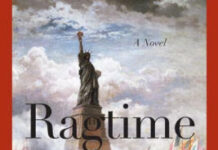In the ever-expanding landscape of speculative fiction, Veronica Roth’s The Fates Divide stakes its claim as a bold continuation of a beloved saga. With vivid world-building and a cast of complex characters, the novel invites readers to journey deeper into a future shaped by choices and consequences. This review seeks to thoughtfully explore how Roth navigates themes of fate and free will,examining the strengths and nuances that define The Fates Divide while considering its place within the broader tapestry of her work.
The Intricate Worldbuilding and how It Shapes the Story’s Emotional Landscape
Veronica Roth masterfully constructs a universe brimming with nuanced cultural tensions and vivid landscapes that serve as more than mere backdrops. Each faction’s unique ideology and history ripple through the narrative, influencing characters’ choices and internal conflicts.The meticulous layering of societal structures, traditions, and terrains crafts an immersive experience where every setting feels palpably alive, enhancing the emotional resonance of pivotal moments. Readers aren’t just observers; they become entwined in a world that breathes alongside the protagonists, grounding high-stakes decisions in relatable human struggles.
Moreover, the interplay between surroundings and emotion acts almost as a character itself, shaping the story’s tone and the protagonists’ psychological landscapes. Consider the following elements that amplify this connection:
- Contrasting terrains: Wild forests versus rigid cityscapes mirror internal freedom and constraint.
- Faction symbolism: Colors, rituals, and customs deepen understanding of loyalty and betrayal.
- Seasonal shifts: Natural cycles parallel phases of hope, despair, and growth.
The Fates Divide thrives on these intricate details, weaving a tapestry where worldbuilding is inseparable from the emotional core, enriching the narrative with profound depth and authenticity.
Exploring the Complex Characters and Their Evolution Through Conflict and Destiny
veronica Roth masterfully crafts her characters as living, breathing entities whose internal struggles and external battles shape their trajectories in profound ways. The protagonists are far from static heroes; instead, they are entities caught in a relentless push and pull between their personal desires and the unyielding demands of fate. Each conflict-whether ideological, emotional, or physical-serves as a crucible that tests and tempers their resolve, forcing them to confront not only external antagonists but also the shadows within themselves. This intricate layering ensures that the characters’ evolution feels organic, making their victories and failures resonate deeply with readers.
one of the most compelling aspects lies in how Roth interweaves destiny with character development, blurring the lines between predetermined paths and the power of choice. The following table illustrates the dynamic interplay between core characters’ challenges and the pivotal moments that drive their growth:
| Character | major Conflict | Evolution Highlight |
|---|---|---|
| Cordelia | Balancing personal freedom vs. duty | Embracing leadership amid sacrifice |
| Riker | Trust and loyalty in uncertain alliances | Choosing integrity over survival |
| Shere | Justice vs. vengeance | Finding peace through forgiveness |
- Psychological depth: The inner turmoil of characters fuels their decisions.
- Dynamic relationships: Interpersonal conflicts catalyze unexpected growth.
- Destiny’s ambiguity: Challenges the notion of a fixed path, empowering agency.
the Balance Between Action-Packed Sequences and Reflective Moments in the Narrative
veronica Roth masterfully weaves bursts of adrenaline-pumping action with introspective pauses that allow readers to breathe and reflect. The relentless pace of intense battles and narrow escapes is expertly counterbalanced by moments where characters pause to grapple with their doubts, fears, and hopes. This dance between external chaos and internal contemplation adds depth, transforming the narrative from a mere sequence of events into a profound exploration of the human condition amid turmoil.
What truly sets The Fates Divide apart is its purposeful pacing, which respects both the thrill-seeker and the thoughtful reader. Consider the table below, which highlights key scenes illustrating this equilibrium:
| Scene Type | Example | Impact |
|---|---|---|
| Action-Packed | Storming the enemy fortress | Elevates tension, showcases character bravery |
| Reflective Moment | Jude’s quiet contemplation under the stars | Reveals inner conflict and growth |
| Action-Packed | High-speed chase through the city | Maintains energetic momentum |
| Reflective Moment | Lonely letter exchange between allies | Builds emotional resonance and connection |
- Dynamic pacing keeps engagement levels steady without overwhelming readers.
- Interspersed reflection deepens character development and theme exploration.
- Strategic tension release offers respite while maintaining narrative cohesion.
Themes of Fate, Free Will, and Personal Choice Woven Throughout the Plot
Veronica Roth masterfully intertwines the intricate dance between fate, free will, and personal choice to challenge readers’ perceptions of destiny. Throughout The Fates Divide, characters grapple with seemingly predetermined paths while simultaneously carving out their own decisions, making each moment a battleground of control and surrender. Roth’s narrative reveals that fate is not a rigid script written in stone but rather a tapestry woven with threads of intention, impulse, and result. This delicate balance invites readers to question: are our lives bound by the stars, or are they shaped by the courage to choose otherwise?
The novel explores this interplay through:
- The tension between prophecy and rebellion, where characters confront foretold destinies.
- Moments of decisive agency that ripple through the story,altering trajectories in unexpected ways.
- The psychological weight of knowing one’s path might potentially be rigged, raising questions about authenticity in choices.
| Element | Depiction in the Novel |
|---|---|
| Fate | Ancient prophecies guiding foundational conflicts |
| Free Will | Characters’ acts of defiance against their expected roles |
| Personal Choice | Moments that redefine allegiance and identity |
The Role of Supporting Characters in Enhancing the Protagonist’s Journey
Supporting characters in The Fates Divide are far from mere background fillers; they act as essential catalysts that deepen the protagonist’s development and the narrative’s emotional resonance.Each ally and adversary enriches the story by mirroring facets of the protagonist’s inner conflicts and ambitions, offering crucial perspectives that challenge or reaffirm her choices. Their unique motivations and flaws create a dynamic interplay, making the protagonist’s journey feel multifaceted rather than linear, while simultaneously expanding the world-building with diverse viewpoints and histories.
Consider how Veronica Roth weaves these relationships through subtle interactions and meaningful dialog, allowing supporting characters to serve multiple purposes. They provide:
- Emotional depth: Friends and foes alike evoke empathy and tension, heightening stakes.
- Plot propulsion: Their decisions often introduce twists that force the protagonist into new, evolving challenges.
- Thematic reflection: They personify various aspects of fate,choice,and destiny.
| Supporting Character | Role | Impact on Protagonist |
|---|---|---|
| Elias | Loyal companion | Challenges trust, encourages growth |
| Mira | Cunning rival | Pushes protagonist to confront morality |
| Joran | Mentor figure | Provides wisdom, reveals hidden truths |
How Veronica Roth’s Writing Style Captivates and Challenges Readers
Veronica Roth’s prose in The Fates Divide effortlessly blends clarity with complexity, offering readers an immersive experience that is as intellectually stimulating as it is emotionally resonant. Her narrative voice strikes a delicate balance between urgency and thoughtfulness, pulling readers deep into a world where every choice carries weight. Through dynamic character perspectives and vivid, tightly-woven imagery, Roth crafts a story that challenges readers to question notions of fate, free will, and identity without ever becoming didactic or heavy-handed.This subtlety allows her themes to resonate more powerfully, inviting introspection long after the final page.
- Economy of language that sharpens focus without sacrificing depth
- Layered worldbuilding that enriches the narrative tapestry
- Complex emotional arcs that reflect real human conflicts
- Pacing that oscillates between intense action and reflective moments
Her approach to storytelling also embraces ambiguity, compelling readers to engage critically with the text. The tension between destiny and autonomy is not neatly resolved, mirroring life’s inherent uncertainties. Roth’s skillful manipulation of narrative structure adds another dimension to this effect, as shifts in timeline and viewpoint uncover fresh facets of character motivation and internal struggle. The following table highlights key stylistic elements that both captivate and challenge, illustrating how Roth’s craft transforms a seemingly straightforward YA sci-fi adventure into a multidimensional literary experience:
| stylistic Element | Effect on Reader |
|---|---|
| Multiple POVs | Encourages empathy through varied perspectives |
| Sparse yet evocative prose | Invites imagination and personal interpretation |
| Non-linear storytelling | Builds suspense and thematic complexity |
| Subtle moral dilemmas | Prompts ethical reflection beyond the plot |
The Pacing and Structure That Keep Readers engaged and Emotionally Invested
veronica Roth masterfully orchestrates the rhythm of the Fates Divide, crafting a narrative that pulses with deliberate momentum. The story unfolds in waves, blending moments of high-octane action with quieter, introspective scenes that invite readers to breathe and reflect.This ebb and flow ensures that the tension never overwhelms; rather, it builds steadily, allowing emotions to resonate deeply. Roth’s choice to intersperse multiple perspectives not only enriches the plot but also layers the pacing, creating a tapestry where each character’s journey accelerates at its own compelling tempo while contributing to the overarching drive toward destiny.
Structurally, the novel employs a fine balance between unpredictability and a clearly defined trajectory, quite like a carefully plotted map that beckons readers onward. Key plot points are introduced with precision, often followed by reflective passages that allow the emotional stakes to sink in. This approach encourages investment beyond mere plot curiosity-readers are drawn into the characters’ hopes, fears, and dilemmas. Consider this table summarizing pacing techniques Roth uses to maintain engagement and emotional immersion:
| Technique | Purpose | Effect on Reader |
|---|---|---|
| Alternating Narratives | Varied viewpoints | Heightened emotional depth |
| Strategic Cliffhangers | Maintain suspense | Compels page-turning |
| Balanced Action and Reflection | Emotional resonance | Deep reader investment |
| Foreshadowing | Build anticipation | Creates satisfying payoffs |
Comparing The Fates Divide to Roth’s Previous Works and Genre Benchmarks
Veronica Roth’s The Fates Divide marks an evolution in her storytelling, blending the raw emotional intensity familiar from the Divergent series with a more refined and intricate world-building approach. While Roth’s earlier works are anchored heavily in dystopian themes and fast-paced action, this novel embraces a broader spectrum of emotions, delving deeper into themes of loyalty, sacrifice, and the consequences of choice. The prose feels more mature,reflecting an author who has grown alongside her readers without losing the signature tension and moral complexity that define her voice. Fans of Roth will recognize her hallmark character-driven narratives, yet they’ll also find fresh layers that challenge genre expectations.
When stacked against genre benchmarks like Legend by Marie Lu or Red Queen by Victoria Aveyard, The Fates divide holds its own in both pacing and thematics. It negotiates well the balance between dystopian grit and romantic elements, avoiding the pitfalls of overused tropes. This balance is evident in its plot mechanics and character arcs, which skillfully intertwine personal dilemmas with larger societal conflicts. Below is a comparison table highlighting key aspects of Roth’s novel aligned with its peers:
| Aspect | The Fates Divide | legend | Red Queen |
|---|---|---|---|
| World-Building | Intricate, multi-layered factions with political tension | Military-driven dystopia with class divides | Supernatural elements within a rigid class system |
| Character Complexity | Flawed protagonists with evolving motives | Driven, morally ambiguous heroes | Strong-willed, conflicted heroines |
| Plot Pacing | Measured, blending action and introspection | Fast-paced, action-heavy | Dynamic with frequent twists |
| thematic Depth | Choice, destiny, and unity vs. division | Survival, loyalty, and rebellion | Power, identity, and deception |
- Unique emotional resonance: Roth’s nuanced portrayal of internal conflicts elevates the narrative.
- Balanced narrative structure: The book smoothly transitions between high-stakes sequences and reflective moments.
- Meaningful genre contribution: it revitalizes common YA dystopian motifs with fresh perspectives.
Symbolism and Imagery That Deepen the Story’s Mythical and Philosophical Layers
Roth masterfully weaves a tapestry of symbols that resonate beyond the immediate plot, making the narrative an allegory for the human condition.The recurring motif of mirrors not only reflects physical realities but also challenges characters to confront their internal divides and shifting identities. Simultaneously occurring, celestial imagery – from constellations that guide the Fates to the omnipresent moon phases - underscores the novel’s exploration of destiny versus free will, inviting readers to ponder the cosmic balance between control and chaos. Such layered symbolism enriches the text, transforming each page into a portal where myth and ideology entwine.
The story’s layered use of imagery is also evident in how Roth employs natural elements, which function metaphorically to signify transformation and impermanence. Elements like the whispering forest and the crumbling stone bridges evoke themes of transition and barrier-both literal and ideological-that the characters must navigate. This is elegantly summarized in the table below, which captures some of the most impactful symbols and their thematic carriers:
| Symbol | Representation | Philosophical Layer |
|---|---|---|
| Mirrors | Self-reflection, fractured identity | Duality of existence and choice |
| Celestial Bodies | Guidance, fate | Cosmic determinism vs. autonomy |
| Whispering Forest | Mystery, transition | The unknown paths of life |
| Crumbling Stone Bridges | Connection, broken ties | Barriers between past and future |
These symbols are not mere decorative devices; they breathe philosophical depth into the story’s fabric. Roth invites readers to discern how fate’s entanglements manifest not just as external challenges but as internal struggles to reconcile identity, morality, and purpose-each symbol a stepping stone guiding the journey through these profound thematic layers.
Recommendations for Readers Who Enjoy Thought-Provoking Science Fiction and Fantasy
For those captivated by the intricate world-building and moral complexities in The Fates Divide, diving into works that similarly challenge the boundaries of fate and choice can be immensely rewarding. Consider exploring authors like N.K.Jemisin whose Broken Earth trilogy delves into environmental catastrophe and social upheaval with a deeply emotional narrative. another compelling option is Ted Chiang, whose short stories blend high-concept ideas with profound humanistic questions that echo Roth’s exploration of destiny and consequence.
Engaging with stories that fuse speculative imagination and philosophical depth helps expand the conversation around free will, identity, and what it means to shape one’s own path. Here are some recommended titles that complement Roth’s themes and narrative style:
- Ann Leckie – Ancillary Justice (explores identity and consciousness within a sprawling sci-fi universe)
- Ursula K.Le Guin – The Dispossessed (a classic that interrogates utopian society and personal freedom)
- Martha Wells – Murderbot diaries (combines witty narrative voice with existential themes around autonomy)
| Title | Core Theme | Why It Resonates |
|---|---|---|
| Children of Time | Evolution & Legacy | Explores destiny through the lens of survival and adaptation |
| The Left Hand of Darkness | Gender & Society | Challenges identity norms much like Roth’s characters challenge fate |
| Station Eleven | Survival & humanity | Reflects on rebuilding life and meaning after crisis |
Considerations for Newcomers to Veronica Roth’s Literary Universe
Embarking on the journey through Veronica Roth’s literary world, especially with The Fates Divide, requires an openness to richly layered characters and morally complex dilemmas. New readers may find themselves immersed in a narrative that expertly fuses elements of fantasy with psychological depth, demanding attention to subtle character motivations and shifting alliances. It’s not just a tale of adventure; it’s a study in resilience, identity, and the tangled paths that destiny carves. Embracing this mindset allows newcomers to appreciate the intricate emotional tapestry Roth weaves throughout.
To make the most of this experience, consider these guiding points:
- Patience with pacing: Roth’s storytelling unfolds deliberately, layering world-building with introspective moments.
- Character relationships: The evolving dynamics often hold keys to pivotal plot twists.
- Openness to ambiguity: Moral and emotional gray areas are central, inviting readers to question easy categorization.
| Aspect | Newcomer’s Tip |
|---|---|
| World-Building | Focus on atmosphere over exhaustive details |
| Protagonist | Look beyond actions to understand inner conflict |
| Plot Development | Expect surprises-embrace unpredictability |
potential Discussion Topics for Book Clubs and literary Analysis
Veronica Roth’s The Fates Divide opens a rich landscape for debate, inviting readers to explore complex themes of power, choice, and fate. Book clubs can dig deep into the ways Roth challenges the concept of destiny-are her characters truly bound by fate, or do they carve their own paths? Consider the role of prophecy versus free will in shaping the narrative. How does the tension between these forces reflect on real-life decision-making and moral obligation? Another angle involves dissecting the world-building: the divides between societies, the cultural clashes, and how these distinctions fuel conflict and character development.
For literary analysis, focus on Roth’s use of symbolism and narrative structure.The novel’s pacing and shifting perspectives illuminate the characters’ inner struggles and larger world stakes. Pay particular attention to recurring motifs such as light and shadow, which underscore themes of hope and secrecy. To aid discussion, the following table outlines key thematic elements alongside related questions:
| Theme | Discussion Points | Quotes to Consider |
|---|---|---|
| Choice vs. Fate | Are characters empowered by destiny or limited by it? | “We make the choices that make us.” |
| Division & Unity | How do societal divides shape identity and conflict? | “Bridges can be built or burned.” |
| Light & Shadow | What does light symbolize in moments of darkness? | “Even in darkness,a spark can guide.” |
- Character motivations: Explore the complexities behind loyalties and betrayals.
- Narrative perspective: Discuss the impact of multiple viewpoints on reader engagement.
- Ethical dilemmas: Debate the moral choices that define the story’s progression.
About Veronica Roth The Author Behind The Fates Divide and Her Creative Vision
The Fates Divide invites readers to journey through a landscape where choices ripple across fate’s intricate web, challenging characters and audiences alike to ponder the weight of destiny. Veronica Roth weaves a tapestry that is both familiar and refreshingly complex, leaving us with lingering questions rather than tidy answers. Whether you find yourself enchanted by its world or skeptical of its twists, this installment undeniably adds another layer to the ongoing conversation about free will, consequence, and the paths we choose to follow. As the final pages close, the story’s echoes remind us that sometimes, the most compelling journeys are the ones that leave us thoughtfully suspended between hope and uncertainty.










